Tue 7 Apr 2009
A tailgate gallery of bumper-sticker humor; Point Reyes weather both Arctic & tropical
Posted by DavidMitchell under History, Marin County, Point Reyes Station, West Marin nature
Comments Off on A tailgate gallery of bumper-sticker humor; Point Reyes weather both Arctic & tropical
In San Anselmo last Thursday, an SUV parked near my car caught my attention because its tailgate was plastered with bumper-stickers, some of which had a Stinson Beach or other West Marin theme.

When the driver returned to the vehicle, I asked if he was from Stinson Beach. No, he replied before driving off, the car belongs to his sister, and she often goes to Stinson to walk her dog. As the SUV disappeared, I wondered about “Save a Cow, Eat a Vegetarian.” It’s obviously a jab at political correctness, but what exactly does it imply? That bovine and hominid vegetarians compete for ruffage?

Most of us have seen bumper-stickers that boast, “My Child is an Honor Student at St. Swivens High [or whatever] School,” and it was this sassy spoof that prompted me to start snapping pictures of the tailgate’s humor.
 Here’s a poke at the kind of personal ads that show up locally in The Bay Guardian or on Craigslist.
Here’s a poke at the kind of personal ads that show up locally in The Bay Guardian or on Craigslist.

In the unlikely event that some drivers actually find their inamoratas through ads on bumper-stickers, the SUV also offers this caution.
And should any reader in Stinson Beach spot this red Nissan Xterra, please ask the driver to explain the cow-and-vegetarian joke — and then forward her answer to this blog.
Before signing off, I have one last question. What are we to make of the weather boxes that are now offered on Google homepages? Shingles can be blowing off roofs around here, and Google will report a windspeed of 3 mph for Point Reyes Station. Usually, Google’s current temperature bears a closer resemblance to reality than its windspeed, but recently even its current-temperature reports for Point Reyes Station have been goofy.
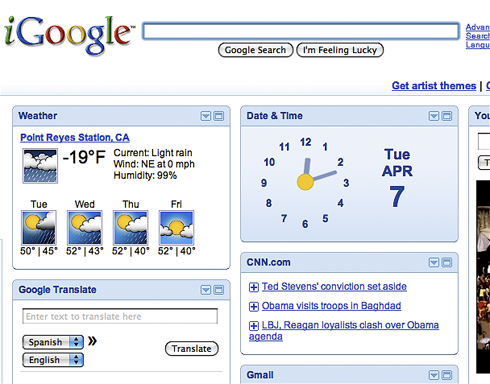
Skies were mostly overcast at noon Tuesday with a light drizzle, but the air was neither still nor 51 degrees below freezing. With all its technical expertise, you’d think Google would realize its system was crashing when it reported Arctic air in Point Reyes Station.
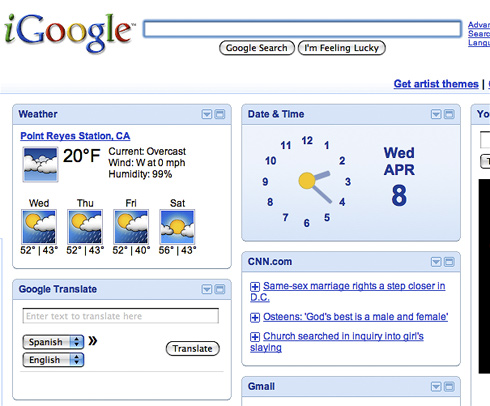 Just to see if the goofy temperature Google had listed around noon Tuesday was merely a brief aberration, I checked again at 2:22 a.m. Wednesday. By now the air outside had warmed up some, according to Google, but our springtime night was still 12 degrees below freezing. Meanwhile, my own outdoor thermometer showed an air temperature of just over 50 degrees.
Just to see if the goofy temperature Google had listed around noon Tuesday was merely a brief aberration, I checked again at 2:22 a.m. Wednesday. By now the air outside had warmed up some, according to Google, but our springtime night was still 12 degrees below freezing. Meanwhile, my own outdoor thermometer showed an air temperature of just over 50 degrees.
 By 2 p.m. Wednesday, my thermometer indicated the air outdoors had risen to 60 degrees, so I checked what Google was reporting and this time found Point Reyes Station sounding like a town in the tropics. If I were to believe Google, the temperature here had soared by 113 degrees in 26 hours. What is going on?
By 2 p.m. Wednesday, my thermometer indicated the air outdoors had risen to 60 degrees, so I checked what Google was reporting and this time found Point Reyes Station sounding like a town in the tropics. If I were to believe Google, the temperature here had soared by 113 degrees in 26 hours. What is going on?
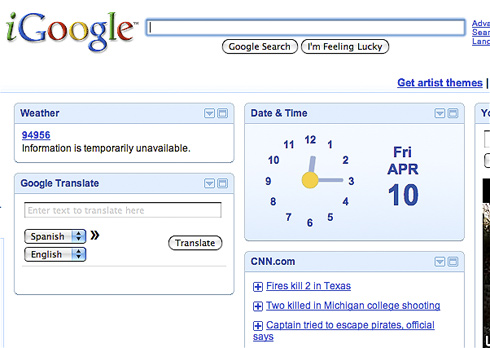 Addendum: By Friday, Google was reporting that in Point Reyes Station’s zip code, current temperature “information is temporarily unavailable.” I’d like to think that this blog had something to do with that, but I doubt it.
Addendum: By Friday, Google was reporting that in Point Reyes Station’s zip code, current temperature “information is temporarily unavailable.” I’d like to think that this blog had something to do with that, but I doubt it.

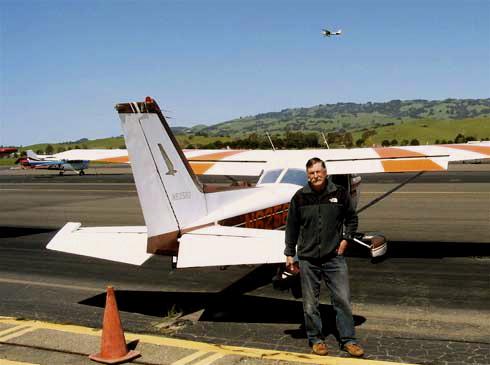
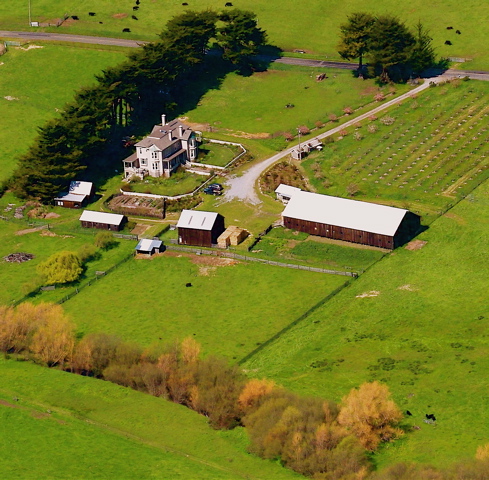

 The “most common industries for males” working in West Marin, City-Data.com says, are: “construction, 17 percent; professional, scientific, and technical services, 10 percent; agriculture, forestry, fishing and hunting, 10 percent; educational services, 8 percent; accommodation and food services, 7 percent; health care, 5 percent; arts, entertainment, and recreation, 5 percent.”
The “most common industries for males” working in West Marin, City-Data.com says, are: “construction, 17 percent; professional, scientific, and technical services, 10 percent; agriculture, forestry, fishing and hunting, 10 percent; educational services, 8 percent; accommodation and food services, 7 percent; health care, 5 percent; arts, entertainment, and recreation, 5 percent.”
 A warning sign of Spring: Hundreds of people showed up at the Dance Palace this afternoon for Sacred Heart Church’s annual St. Patrick’s Day Barbecue.
A warning sign of Spring: Hundreds of people showed up at the Dance Palace this afternoon for Sacred Heart Church’s annual St. Patrick’s Day Barbecue.
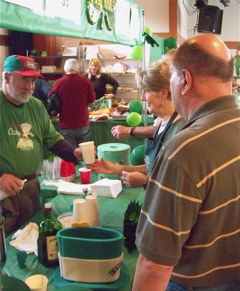 A volunteer bartender at the St. Patrick’s Day Barbecue, Mark Allen (left) of Inverness Park, takes an order for an Irish coffee.
A volunteer bartender at the St. Patrick’s Day Barbecue, Mark Allen (left) of Inverness Park, takes an order for an Irish coffee.
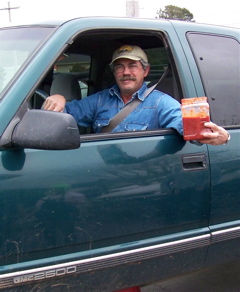

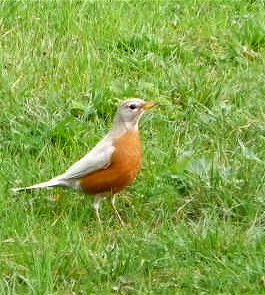 Another warning sign of Spring: The gloomy days of winter are supposed to be over “when the red, red robin comes bob, bob, bobin’ along.” But at Jay’s home this year, the first robin of Spring is not “red, red” but partially albino. (Photo by Jay Haas)
Another warning sign of Spring: The gloomy days of winter are supposed to be over “when the red, red robin comes bob, bob, bobin’ along.” But at Jay’s home this year, the first robin of Spring is not “red, red” but partially albino. (Photo by Jay Haas)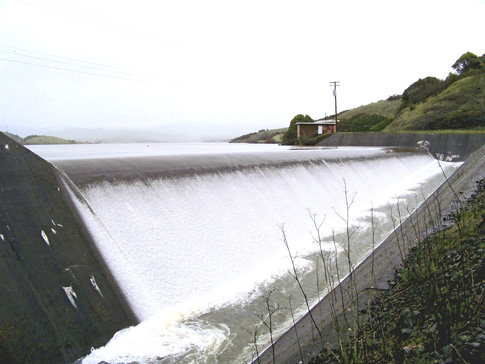
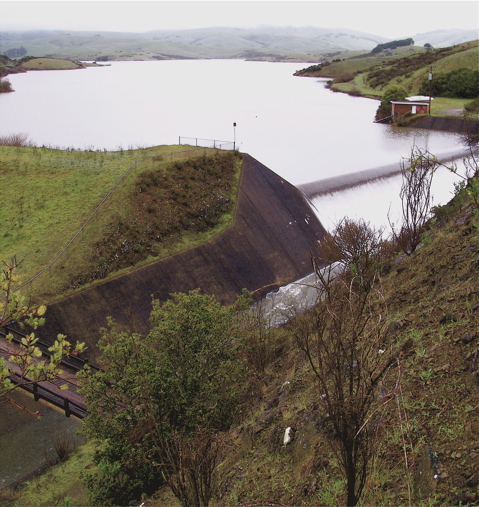
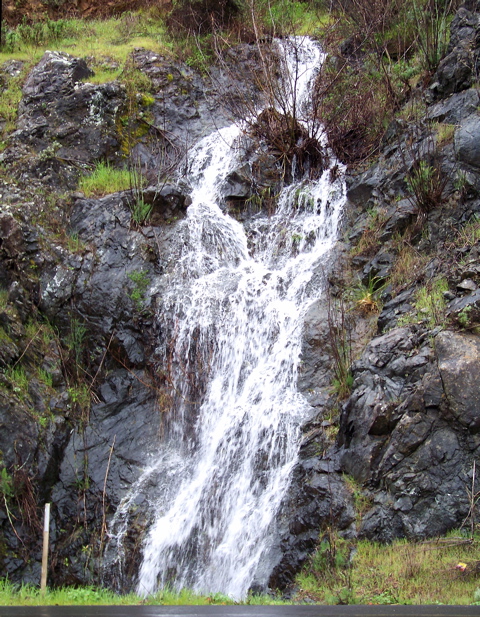
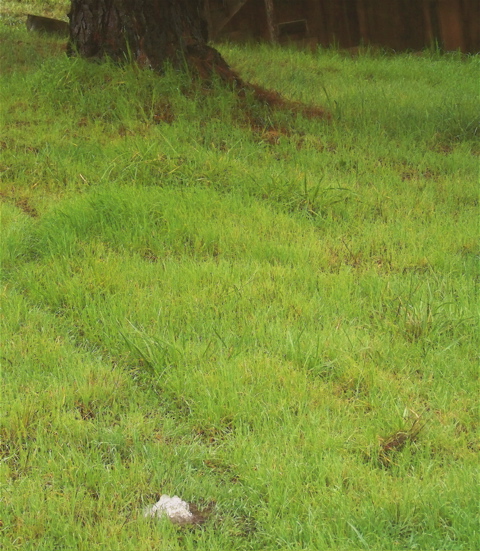
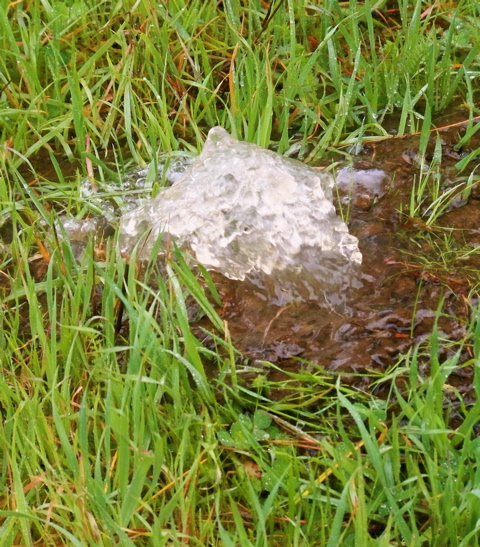
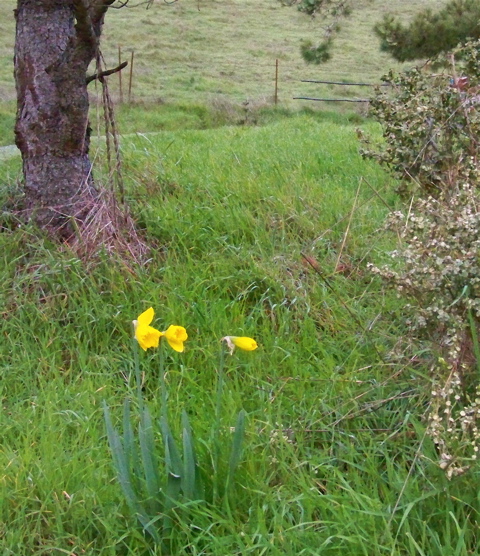
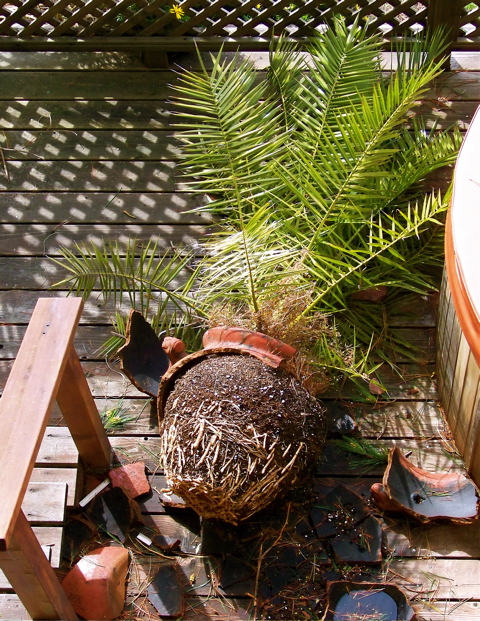 Worse yet, a terra cotta pot more than two feet high and holding a palm tree was blown over and busted on my deck. The last time wind busted a big pot at my cabin was just over two years ago, and it wasn’t this big. Finding a replacement large enough to hold the root ball required a trip over the hill Wednesday and a lot of driving around. After extensive searching, I was able to find exactly one that was big enough.
Worse yet, a terra cotta pot more than two feet high and holding a palm tree was blown over and busted on my deck. The last time wind busted a big pot at my cabin was just over two years ago, and it wasn’t this big. Finding a replacement large enough to hold the root ball required a trip over the hill Wednesday and a lot of driving around. After extensive searching, I was able to find exactly one that was big enough.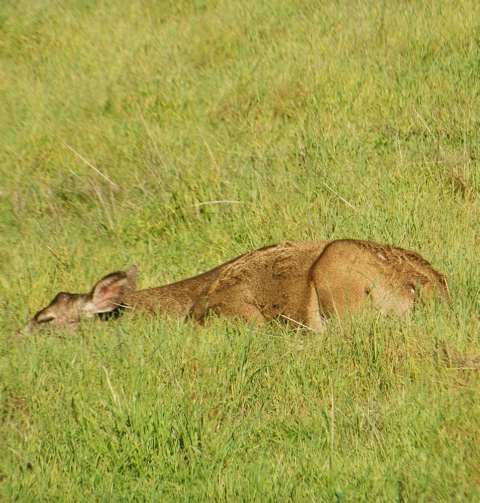
 For nearly 500 West Marin residents watching TV inside Toby’s Feed Barn this morning, the inauguration of President Barack Hussein Obama carried the excitement of Prince Charles’ visit, mankind’s landing on the moon, and Western Weekend all happening at once.
For nearly 500 West Marin residents watching TV inside Toby’s Feed Barn this morning, the inauguration of President Barack Hussein Obama carried the excitement of Prince Charles’ visit, mankind’s landing on the moon, and Western Weekend all happening at once. Some adults brought children as young as toddlers to this historic celebration. Others brought dogs. However, no one that I saw brought both.
Some adults brought children as young as toddlers to this historic celebration. Others brought dogs. However, no one that I saw brought both.


 Inverness tree trimmer Tom Kent, who did go, told me approximately 75 people were on hand, and others told me that most of those got in the water, including one young woman who braved the the chilly bay au naturel. Did Tom take a dip in the bay too? “I borrowed a wetsuit,” he replied. “It was the first time I’d ever worn one. Boy, do they take a long time to get into!”
Inverness tree trimmer Tom Kent, who did go, told me approximately 75 people were on hand, and others told me that most of those got in the water, including one young woman who braved the the chilly bay au naturel. Did Tom take a dip in the bay too? “I borrowed a wetsuit,” he replied. “It was the first time I’d ever worn one. Boy, do they take a long time to get into!”


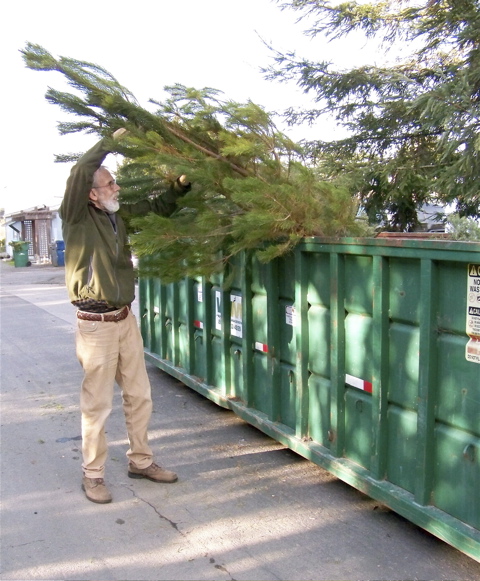

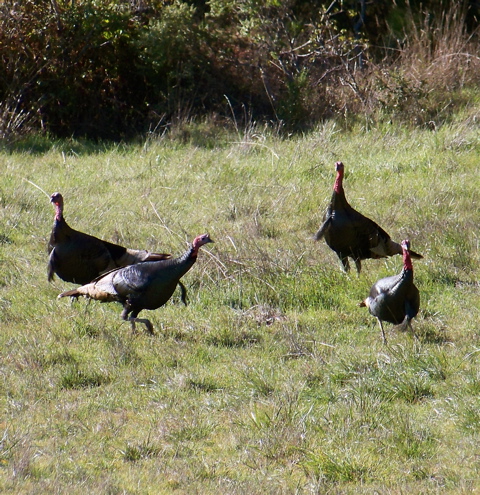

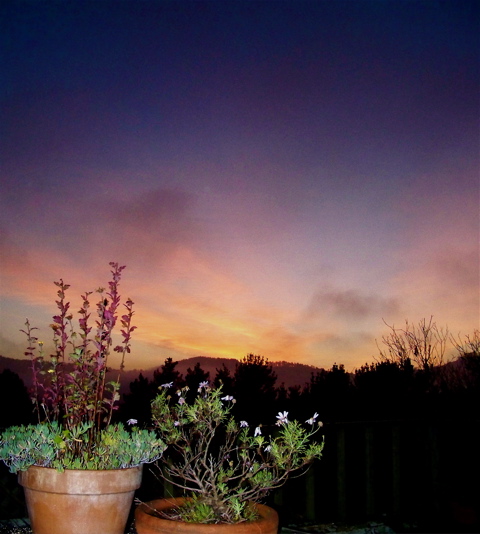
 Tomales Bay area residents tonight coped with a several-hour blackout that hit at 7 p.m.
Tomales Bay area residents tonight coped with a several-hour blackout that hit at 7 p.m. The bomb merely blew a hole in a transformer’s coolant tank, but coolant then drained from it for several hours, causing the transformer to eventually overheat and shut down.
The bomb merely blew a hole in a transformer’s coolant tank, but coolant then drained from it for several hours, causing the transformer to eventually overheat and shut down. Not long after midnight this morning, I was sitting by my woodstove looking into the flames when I heard a coyote howling in the neighboring horse pasture (right), which is owned by the Giacomini family.
Not long after midnight this morning, I was sitting by my woodstove looking into the flames when I heard a coyote howling in the neighboring horse pasture (right), which is owned by the Giacomini family. Soon all three coyotes were howling at once. They finally stopped, but I stayed outside, straining to hear more in the blackness of a moonless midnight.
Soon all three coyotes were howling at once. They finally stopped, but I stayed outside, straining to hear more in the blackness of a moonless midnight. In my case, however, the howling was a happy reminder that here in the small towns of West Marin, the Old West lives on. The coyotes howl, and the wind blows free.
In my case, however, the howling was a happy reminder that here in the small towns of West Marin, the Old West lives on. The coyotes howl, and the wind blows free.